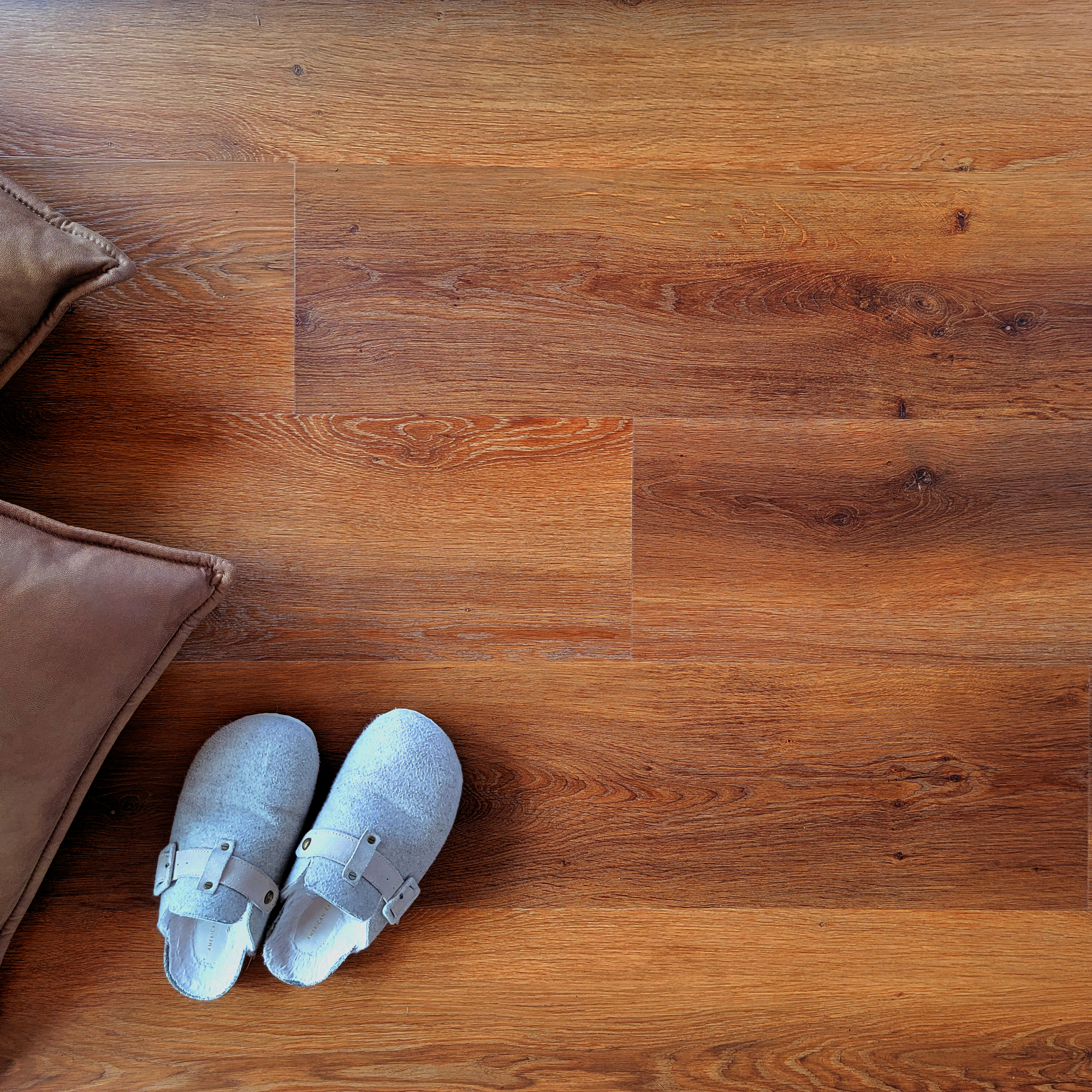When our customers decide that it’s time for new flooring in their homes, one of the first questions they ask is, “Can I install new flooring over my existing floor?” There is no black-and-white answer. However, there are ways to identify whether any demolition will be necessary for this type of project. One of the most significant factors that will help answer this question is what type of new flooring you’re using to replace the old one. Another consideration will be whether the current floor is level or not, and what steps are necessary to remedy it, if needed.Some flooring types should never be installed on top of an old one, and others can sometimes be put right on top when certain conditions are met. One type of home flooring commonly installed right over an existing floor without demolition is luxury vinyl flooring.
TYPES OF FLOORS
There are many flooring options out there, and it takes some due diligence to choose the best one to replace your existing floor. A few of the most popular types are:
- Carpeting
- Laminate
- Luxury vinyl
- Concrete
- Hardwood
Learn about these flooring options to choose which one is best for your specific application. Conclude whether you can install it over your existing floor or not.

LUXURY VINYL TILES AND PLANKS
With the proper substrate, you can install luxury vinyl flooring on top of these existing floors:
- Concrete
- Laminate
- Vinyl
- Stone or ceramic
- Engineered wood
- Solid hardwood
While some other types of flooring require specific underlayment requirements, Allure luxury vinyl planks and tiles often come with a pre-attached underlayment pad. LVP can be installed on most existing floors that are level, free of debris, and free of significant cracks and dents.


LAMINATE
In general, laminate can be installed over some existing floors, as long as the existing flooring is in clean, good condition. Installing laminate over carpeting is not recommended because of the possibility of floor movement, unless the carpeting is low-pile with little or no padding underneath.
If you have laminate flooring it can serve as a solid base for LVP. Luxury vinyl plank flooring and luxury vinyl tile flooring can often be installed over clean laminate that is in good condition. There should be no significant dents or cracks in the existing floor, and the existing floor should be level.
CARPETING
You can put carpet over almost any type of floor, but the reverse is not true. Luckily, removing carpeting is not too difficult of a job, because going over it just won’t work. Carpeting is too flexible of a base for new flooring and should always be removed before installing LVP. Carpeting can easily be cut up and removed in sections to make the task easier. When removing your carpeting don’t forget to pull up any tack strips around the edges of a room and give the floor a good inspection and cleaning before proceeding with your project. Inspect the floor to make sure its level and doesn’t need any additional prep to proceed with your luxury vinyl plank or tile install.


CONCRETE FLOORING
Concrete is a strong material that requires a strong subfloor. Carpeting, old concrete, and wood floors (especially plywood) are porous and don’t make ideal foundations for concrete floors. Even though installing a new concrete floor over many types of existing flooring is possible, it’s not always recommended and can be a very tough and expensive job.
On the flip side, if your existing flooring is concrete, just about any type of flooring can be installed on top of it, provided the existing concrete floor is level and there are no serious issues with it.
HARDWOOD FLOORING
With proper preparation and underlayment, many home flooring options can be installed right over hardwood flooring, especially luxury vinyl tile and plank flooring. Refinishing hardwood floors requires some pretty nasty chemicals and processes, so some people use LVP to cover them until you're ready for that much larger task. Luxury vinyl is also lower maintenance and more forgiving than hardwood.

A NOTE ABOUT THE CONDITION OF YOUR EXISTING FLOORS
There is one thing discussed so far that is worthy of additional mention: Every existing floor must be level and free of major damage.
It’s easier to conclude how to repair and fill cracks, dents, and chips in existing floors. What may not be so apparent is how to fix an existing floor that is not level. Some of the most common corrections, depending on the extent of the uneven flooring, include:
- Pouring self-leveling underlayment for dips that are up to 1 ½” deep.
- Placing new footers, which is a major job for portions of a home that are sinking.
- Sistering joists, which uses bolts, screws, or plates for one floor joist to support a weaker one.
- Propping joists with additional steel columns to level a floor.
- Laying down a plywood subfloor over the existing floor to bridge minor waves in flooring.
The importance of having an existing floor in decent shape before installing a new floor cannot be overstated. While an existing floor does not have to be in absolutely perfect condition, minor workarounds are possible for the elements of a floor that require attention.
CHOOSING LUXURY VINYL PLANK OR TILE FLOORING
A skilled installer can install luxury vinyl plank flooring and vinyl tile flooring over almost any existing floor without demolition work. These home flooring options are durable, water-resistant, scratch-resistant, and can mimic more expensive materials such as stone, marble, hardwoods, and others. Luxury vinyl is also a better investment than many other options, including hardwood.
Once you have decided that luxury vinyl tiles or planks are the best choices for your flooring project, look to the brands of HMTX for superior quality, affordability, and durability for your new floor.








